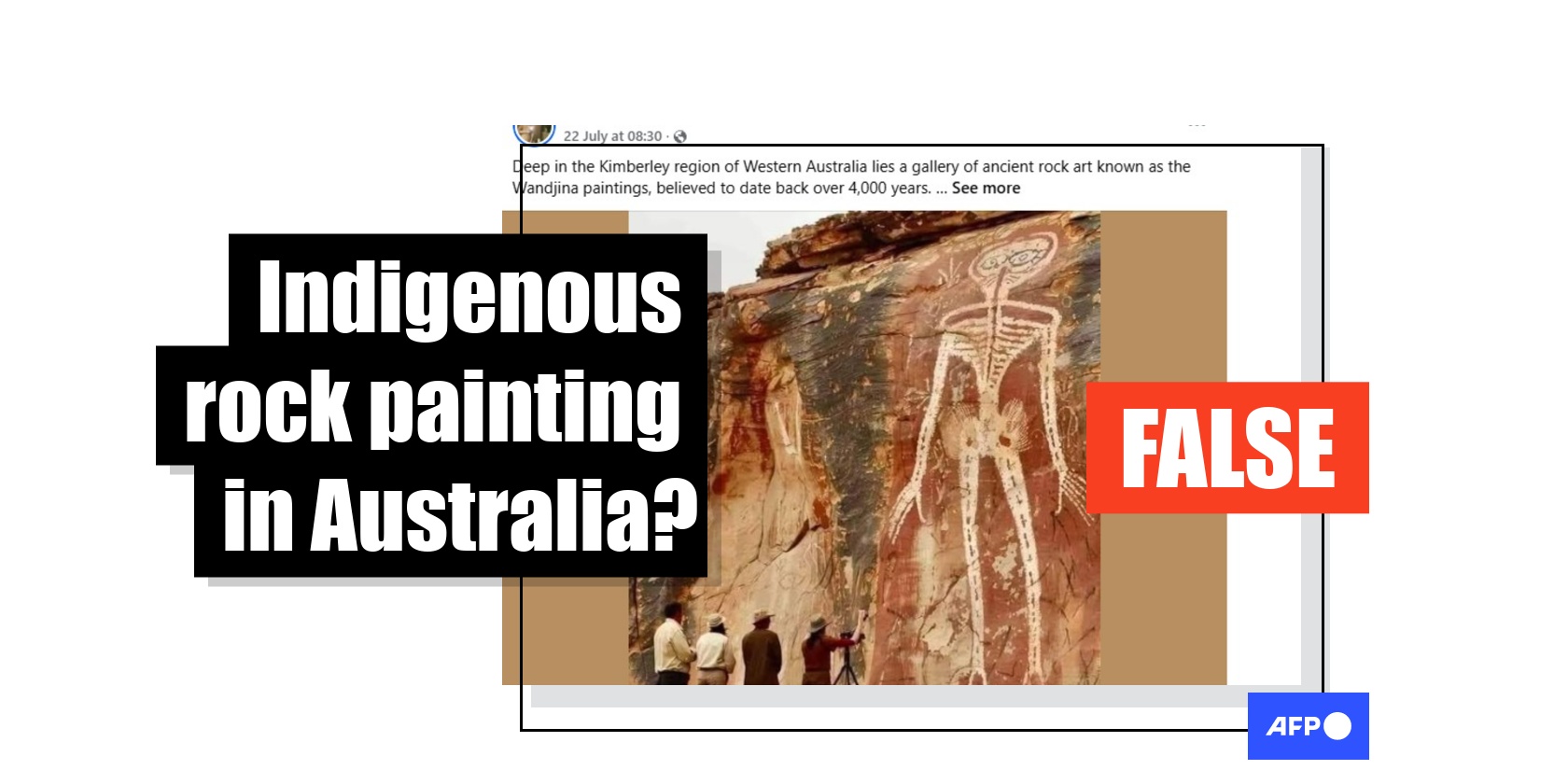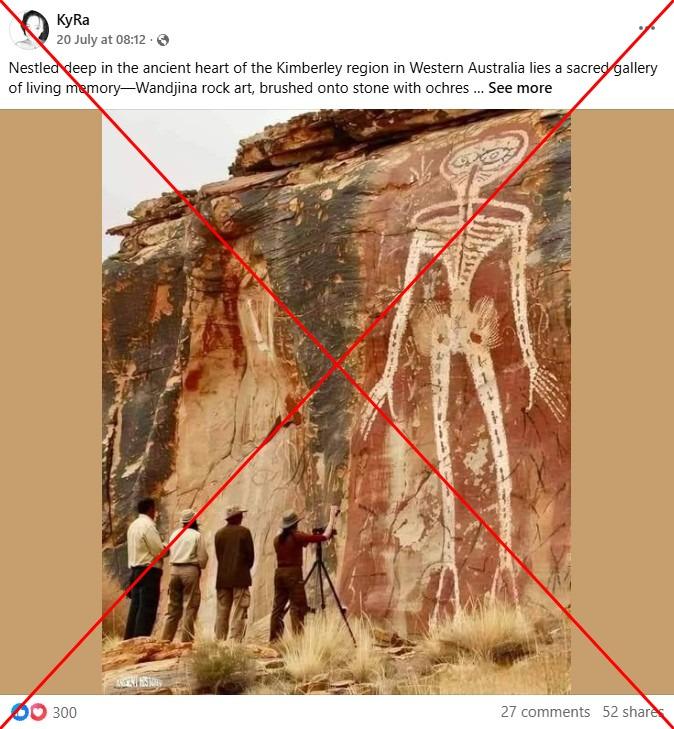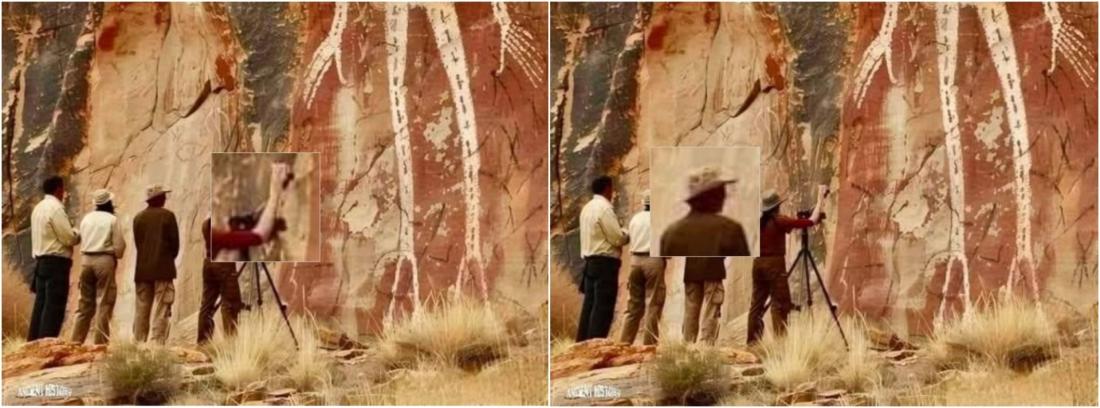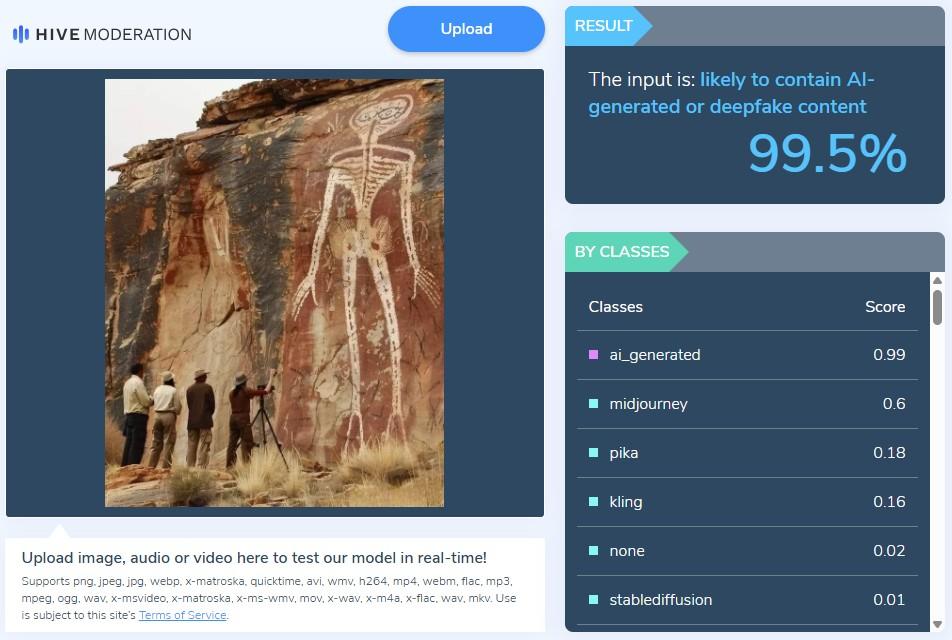
Experts rubbish Aboriginal 'Wandjina art' image that bears AI signs
- Published on August 7, 2025 at 05:26
- 4 min read
- By Dene-Hern CHEN, AFP Australia
"Nestled deep in the ancient heart of the Kimberley region in Western Australia lies a sacred gallery of living memory -- Wandjina rock art, brushed onto stone with ochres drawn from the Earth herself over 4,000 years ago," reads part of a Facebook post shared on July 20, 2025.

The image -- which also depicts four people admiring the rock painting -- was similarly posted by other Facebook and X users, inciting awe from commenters.
"I believe this painting is an example of indigenous Australian's ancestors who were sky people," said one.
Wandjina -- sometimes written as Wanjina -- is a Creation spirit associated with the rain and its paintings are represented in the Aboriginal rock art sites in Kimberley region (archived link).
Often depicted with its body covered with dots to represent rainfall, the Wandjina spirits are viewed as the Creator by people of three Aboriginal language groups -- the Worrorra, Ngarinyin and Wunumbal -- in Kimberley region's Mowanjum community (archived link).
AFP reached out to several archaeologists working in Western Australia, a Ngarinyin Worrorra artist who creates Wandjina paintings, and a gallery director specialising in Aboriginal art -- all were unanimous that the circulated image was not Wandjina, based on its characteristics.
'All wrong'
Pete Veth, a renowned archaeologist who has carried out decades of research across Australia and other territories, told AFP by email on July 30: "These are not Wanjina or any known Kimberley art form" (archived link).
"This image is likely faked, and definitely not from Australia," Alistair Paterson, chair of archaeology at the University of Western Australia said (archived link).
Artist Kirsty Burgu, who is both Ngarinyin and Worrorra, was blunt in her assessment (archived link).
"It doesn't represent a Wandjina at all in every way," she told AFP by phone on July 31.
Pointing out the figure's rib cage, long fingers , the feet, and the hips, she said that these characteristics do not appear in Wandjina paintings.

The figure also lacks a halo, which Burgu said represent clouds for the rainmaker spirit.
"Everything about this image is all wrong," she said. "They should not use the word Wandjina on this painting."
Examples of Wandjina art can be found at The Mowanjum Aboriginal Art & Culture Centre (archived link).
Visual inconsistencies
A closer examination of the image also reveals several visual inconsistencies that are common in AI-generated art, like the elongated hand of the woman taking the picture, and the man beside her lacking any facial features.

A Google reverse image search found that this same image has previously circulated across various social media platforms as ancient cave paintings discovered in India that depict the "groundbreaking revelation of prehistoric extraterrestrial encounters".
Keyword searches on TikTok also found the image as the 12th one in a slideshow posted on May 23, 2024 by Anima Journeys, an account that creates content with AI (archived link). AFP reached out to Anima Journeys on July 30 for confirmation that the user had created the image, but there was no response.
An AI detection tool concluded that the image had a 99.5 percent chance of being "likely to contain AI-generated or deepfake content".

Archaeologist and professor Sven Ouzman, who is also a heritage specialist focused on intellectual property issues relating to Indigenous knowledge and art, said this specific image was first brought to his attention by a student last year (archived link).
He has since used it in his rock art unit "as an example of AI-generated imagery and how it impinges on Indigneous Cultural and Intellectual property".
"The Worroran peoples associated with Wandjina/Wanjina do not, for example, consider it a 'rock painting' or 'image' but an actual Ancestral Being, resting on the rock, to whom they have a reciprocal duty of care. Wanjina may only be made by authorised people -- typically Worroran artists," he told AFP in an email.
"So an AI generated image... contravenes a number of cultural and indeed legal codes/boundaries."
AFP has fact-checked other claims related to AI here.
Copyright © AFP 2017-2025. Any commercial use of this content requires a subscription. Click here to find out more.
Is there content that you would like AFP to fact-check? Get in touch.
Contact us




